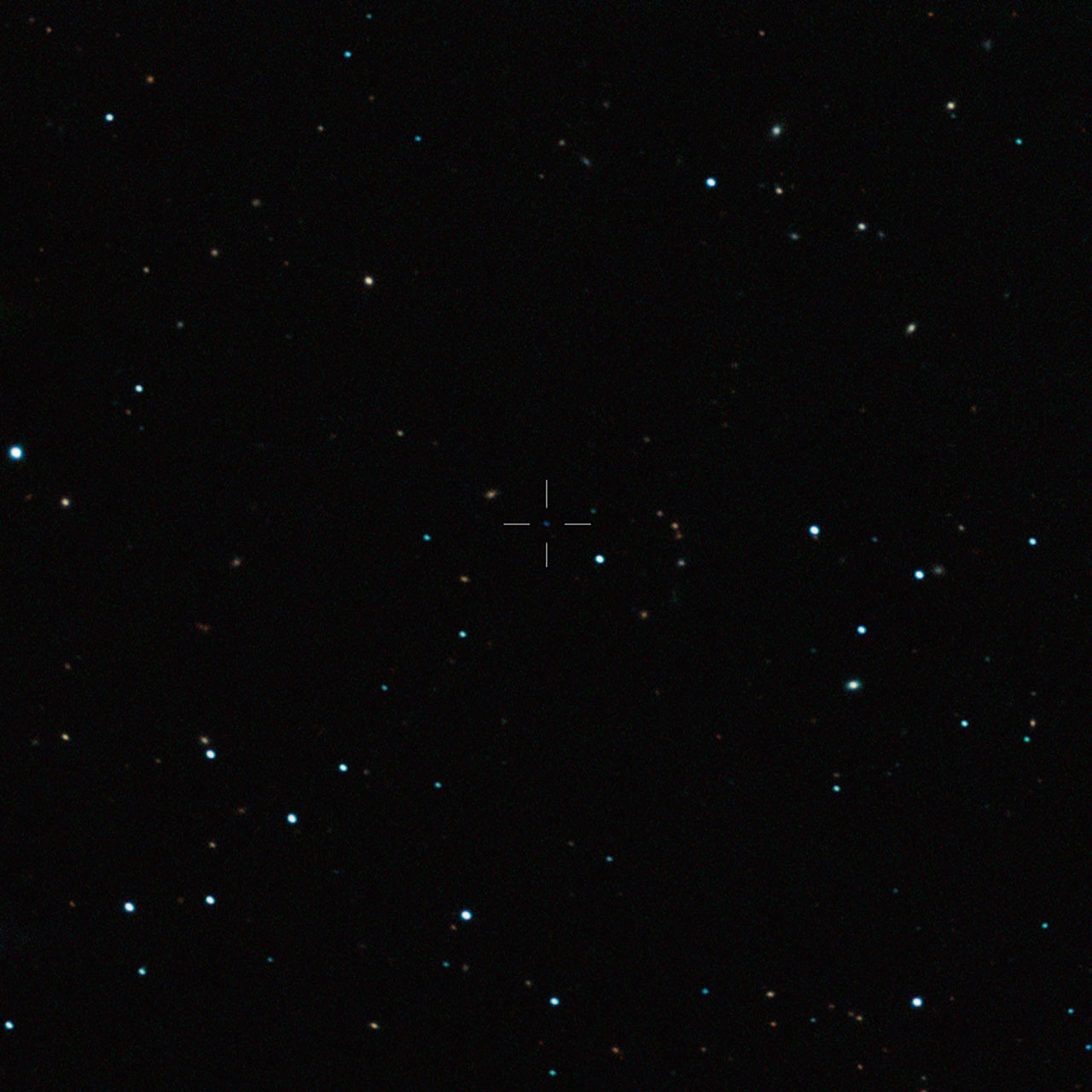Free-floating planets are planetary-mass objects that roam through space without any ties to a star. Possible examples of such objects have been found before but without knowing their ages, it was not possible for astronomers to know whether they were really planets or brown dwarfs, “failed” stars that lack the bulk to trigger the reactions that make stars shine.
The object CFBDSIR J214947.2-040308.9, also known as CFBDSIR2149-0403, seems to be part of a nearby stream of young stars known as the AB Doradus Moving Group. The researchers found the object in observations from the Canada-France-Hawaii Telescope and harnessed the power of ESO’s Very Large Telescope to examine its properties [1].
The AB Doradus Moving Group is the closest such group to the Solar System. Its stars drift through space together and are thought to have formed at the same time. If the object is associated with this moving group — and hence it is a young object — it is possible to deduce much more about it, including its temperature, mass, and what its atmosphere is made of.
The association with the AB Doradus Moving Group would pin down the mass of the planet to approximately 4–7 times the mass of Jupiter, with an effective temperature of approximately 430 degrees Celsius. The planet’s age would be the same as the moving group itself — 50 to 120 million years.
The team’s statistical analysis of the object’s proper motion, its angular change in position across the sky each year, shows an 87% probability that the object is associated with the AB Doradus Moving Group, and more than 95% probability that it is young enough to be of planetary mass, making it much more likely to be a rogue planet rather than a small “failed” star. More distant free-floating planet candidates have been found before in very young star clusters, but could not be studied in detail. So there remains a small probability that the association with the moving group is by chance.

This image captured by the SOFI instrument on ESO’s New Technology Telescope at the La Silla Observatory shows the free-floating planet CFBDSIR J214947.2-040308.9 in infrared light. This object, which appears as a faint blue dot at the centre of the picture and is marked with a cross, is the closest such object to the Solar System. It does not orbit a star and hence does not shine by reflected light; the faint glow it emits can only be detected in infrared light. The object appears blueish in this near-infrared view because much of the light at longer infrared wavelengths is absorbed by methane and other molecules in the planet's atmosphere. In visible light the object is so cool that it would only shine dimly with a deep red colour when seen close-up. Credit: ESO/P. Delorme
The link between the new object and the moving group is the vital clue that allows astronomers to find the age of the newly discovered object . This is the first isolated planetary mass object ever identified in a moving group.
“Looking for planets around their stars is akin to studying a firefly sitting one centimetre away from a distant, powerful car headlight,” says Philippe Delorme (Institut de planétologie et d’astrophysique de Grenoble, CNRS/Université Joseph Fourier, France), lead author of the new study. “This nearby free-floating object offered the opportunity to study the firefly in detail without the dazzling lights of the car messing everything up.”
Free-floating objects like CFBDSIR2149 are thought to form either as normal planets that have been booted out of their home systems, or as lone objects like the smallest stars or brown dwarfs. In either case these objects are intriguing — either as planets without stars, or as the tiniest possible objects in a range spanning from the most massive stars to the smallest brown dwarfs.
“These objects are important, as they can either help us understand more about how planets may be ejected from planetary systems, or how very light objects can arise from the star formation process,” says Philippe Delorme. “If this little object is a planet that has been ejected from its native system, it conjures up the striking image of orphaned worlds, drifting in the emptiness of space.”
These worlds could be common — perhaps as numerous as normal stars. If CFBDSIR2149 is not associated with the AB Doradus Moving Group it is trickier to be sure of its nature and properties, and it may instead be characterised as a small brown dwarf. Both scenarios represent important questions about how planets and stars form and behave.
“Further work should confirm CFBDSIR2149 as a free-floating planet,” concludes Philippe Delorme. “This object could be used as a benchmark for understanding the physics of any similar exoplanets that are discovered by future special high-contrast imaging systems, including the SPHERE instrument that will be installed on the VLT.”
Published in Astronomy&Astrophysics
NOTE:
[1] The object was identified as part of an infrared extension of the Canada-France Brown Dwarfs Survey (CFBDS), a project hunting for cool brown dwarf stars.





Comments